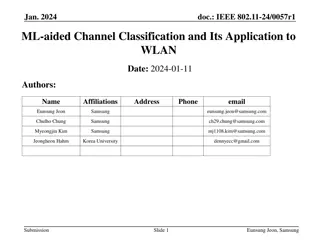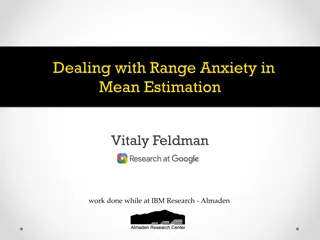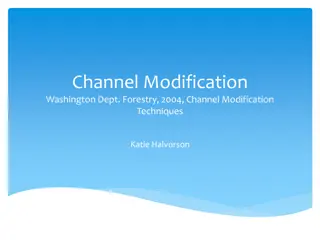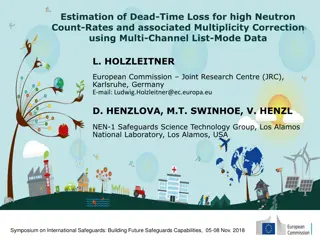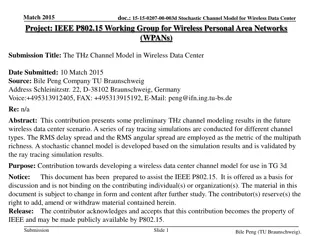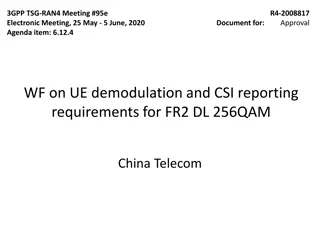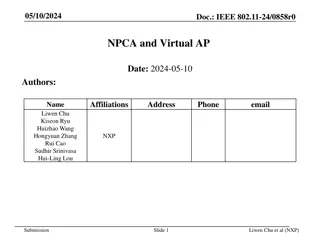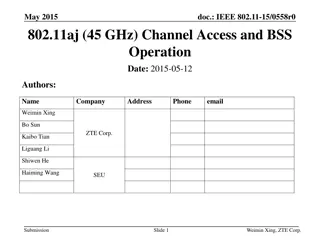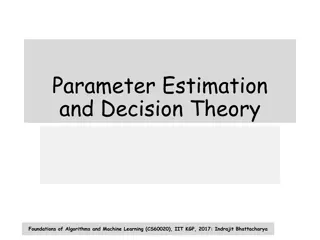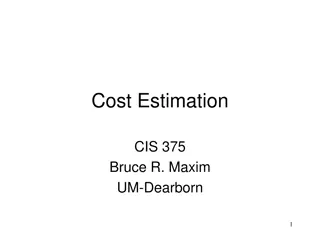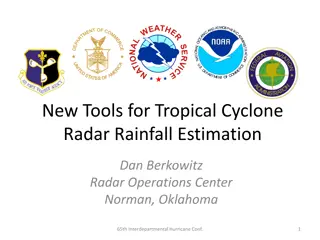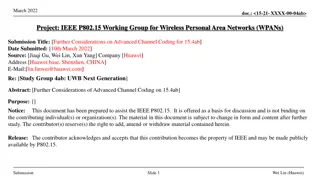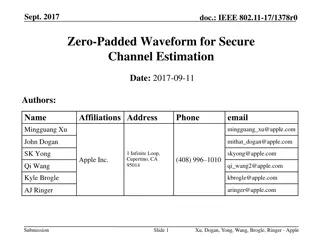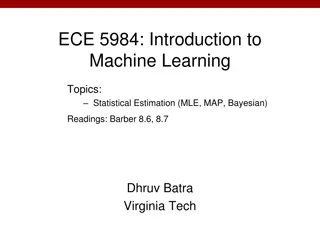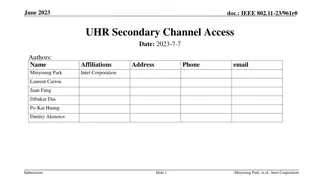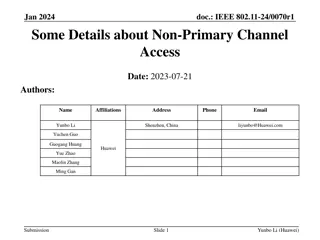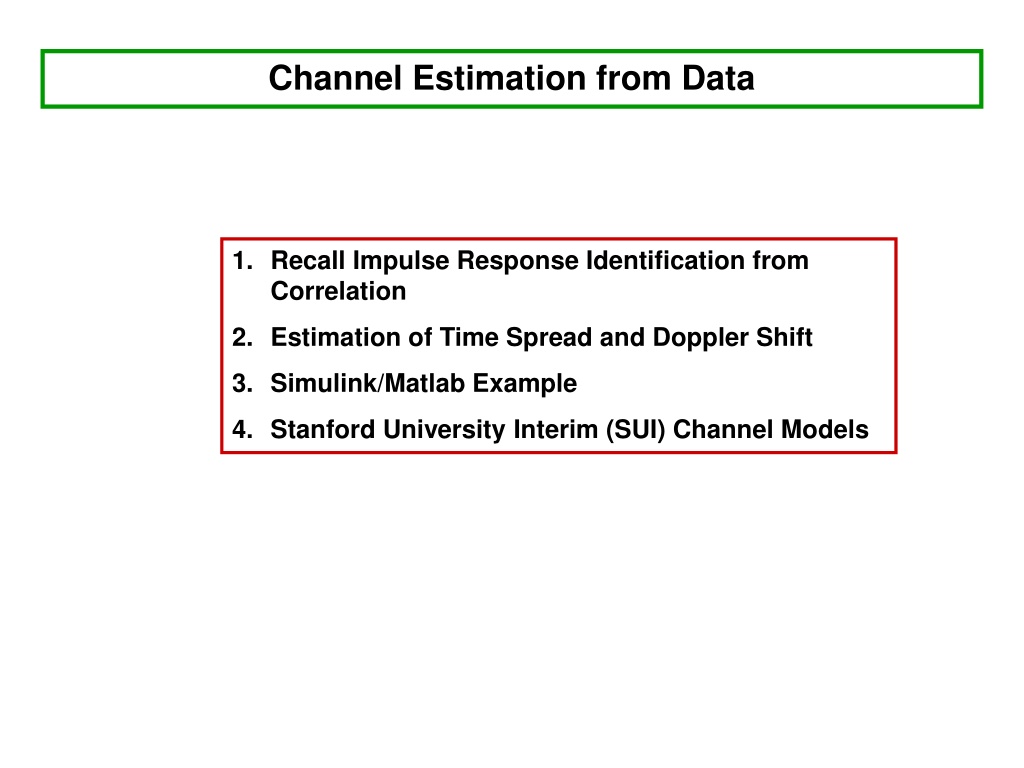
Understanding Channel Estimation and Impulse Response Identification
Learn about channel estimation and impulse response identification from data, including techniques for linear time-invariant systems and linear time-varying channels. Explore examples using MATLAB/Simulink and Stanford University Interim (SUI) Channel Models.
Download Presentation

Please find below an Image/Link to download the presentation.
The content on the website is provided AS IS for your information and personal use only. It may not be sold, licensed, or shared on other websites without obtaining consent from the author. Download presentation by click this link. If you encounter any issues during the download, it is possible that the publisher has removed the file from their server.
E N D
Presentation Transcript
Channel Estimation from Data 1. Recall Impulse Response Identification from Correlation 2. Estimation of Time Spread and Doppler Shift 3. Simulink/Matlab Example 4. Stanford University Interim (SUI) Channel Models
Estimation of Channel Characteristics from Input - Output data. 1. For Linear Time Invariant (LTI) systems: [n y ] + [n x ] = = [ ] y n [ ]* [ ] h n [ ] [ h ] x n x n [n ] h = Excite the system with white noise and unit variance = = * [ ] [ ] [ ] [ ] Rxx m E x n x n m m m and compute thecrosscorrelation between input and output [ ] h E x n = = * [ ] m [ ] [ ] R E y n x n m yx + + = = = * [ ] [ x n m ] [ ] [ h ] [ ] h m m =
In matlab: [n y ] [n x ] ? 1. Get data (same length for simplicity): y x 2. Compute crosscorrelation between input and output: h=xcorr(x,y); If x[n] is white noise, h[n] is the impulse response.
2. For a Linear Time Varying Channel: Multipath Rayleigh Fading Channel [n x ] [ ] y n Rayleigh Fading + = [ ] y n [ , ] [ h n ] x n = [ , ] h n The impulse response changes with time Goal: estimate time and frequency spread. Known: s F 1. Sampling frequency F 2. Upper bound on max Doppler Frequency max D
F N s 1. Collect Data and partition in blocks of length : 0 = n N n = N n 2 = F max D = = B n N n N N x y N T 1/ MAX D F s Within each block the channel is almost time invariant [ ] X=reshape(x,N,length(x)/N); N X,Y = Y=reshape(x,N,length(y)/N); N B
2. Estimate impulse response in each block : h =[ N] h(:,i)=xcorr(Y(:,i),X(:,i))/N; N 2 1 B Take the transpose: Each row is an impulse response taken at different times h =[ ] N B N 2 1 plot((-N+1:N-1)/Fs, abs(h(:,i))); + N / / s F N F s
3. Compute Power Spectrum on each column of h (each row of h) , to determine time variability of the channel (If the channel is Time Invariant all columns of h are the same): = ( ) s t n NT = sT time time h =[ ] N B N 2 1 F = s F kN = sT time N B [ N ] 1 N Freq. H=fft(h ); S=H.*conj(H); B S = 2
4. Take the sum over rows for Doppler Spread and sum over columns for Time Spread (fftshift each vector to have zero term (sec or Hz) in the middle Sf St ( / ) F N = s N f k = / t m s F B / 1 = t S F Time Resolution: 1 F = = S F Hz Frequency Resolution: total data length(sec ) N N B Therefore if we want to a resolution in the doppler spread of (say) 1Hz, we need to collect at least 1 sec of data.
Example: % channel Fs=10^6; P=[0,-2,-3]; T=[0, 10, 15]*10^(-6); fd=70; % sampling freq. In Hz % attenuations in dB % time delays in sec %doppler shift in Hz Rayleigh Fading Bernoulli Binary Rectangular QAM y To Workspace1 Bernoulli Binary Generator Rectangular QAM Modulator Baseband Multipath Rayleigh Fading Channel x To Workspace test_scattering.mdl
Channel Output (Magnitude) with a QPSK Transmitted Signal: 3 2.5 2 1.5 1 0.5 0 t (sec) 0 0.02 0.04 0.06 0.08 0.1 0.12 0.14 0.16 0.18 0.2
sum(S)/NB; sum of each column -3 Time Spread 9x 10 8 7 Time Spread 6 5 4 3 sum(S )/(2N-1); ave. of each row 2 -3 Frequency Spread 1 1.2x 10 0 -1.5 -1 -0.5 0 0.5 1 time (sec) -4 1 x 10 15 sec 0.8 Frequency Spread 0.6 0.4 0.2 0 -1000 -800 -600 -400 -200 0 200 400 600 800 1000 frequency (Hz) Hz + 70 70 Hz





